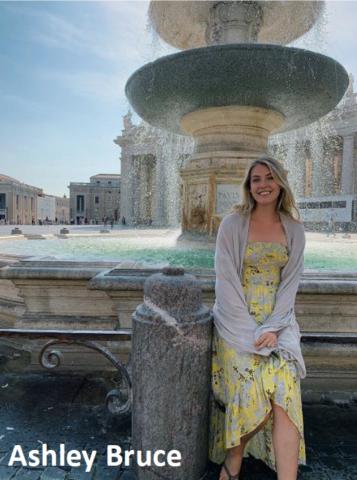Outstanding MS Student Awardee Ashley Bruce's work highlighted by MICCAI 2022 Daily magazine

This article was originally published by MICCAI Daily Magazine.
View the complete news release here.
(Singapore) – Ashley Bruce is a recent graduate from UCSB and a Software Engineer at Veeva.
Michael Beyeler is an Assistant Professor in Computer Science and Psychological Brain Sciences at the University of California, Santa Barbara.
Ashley and Michael speak to us ahead of their poster presentation this afternoon about their work exploring the optimal arrangement of electrodes in epiretinal prostheses.
Several diseases could result in blindness, including some that slowly attack the retina. For the most part, these are hereditary diseases with no cure. Retinal degeneration leads to sight loss because retinal cells are the first step in the vision process. However, even when that first step is gone, it is still possible to hijack the pathway if everything else works.
"Epiretinal prostheses bypass the dead retinal cells by stimulating the next part of the pathway," Ashley explains. "They stimulate the surviving cells and can produce these phosphenes or flashes of light and, quote-unquote, restore vision."
There are already prostheses that use this pathway, but little research has gone into optimizing the placement of electrodes on the prosthesis. That is where this work comes in, proposing a better way to arrange electrodes on the implant to produce greater phosphene coverage.
"Current devices arrange their electrodes on a rectangular grid because it's compact and easy to fabricate," Michael tells us. "Some people have looked at where to place the whole implant on the retina. Ashley was the first to ask, what if we moved every individual electrode around based on what we know about how these electrodes produce artificial vision?"
However, moving every electrode presents the problem of combinatorial explosion. Even in current devices with only 60 electrodes, there are many possibilities for arranging them. It is not usually technically feasible to find a solution.
"Ashley approached this as a greedy optimization problem, where one electrode is placed after another," Michael explains. "We used a computational model of bionic vision to help predict what the vision would look like for a given electrode placement. By iterating over that, Ashley found a mathematically proven optimal solution."